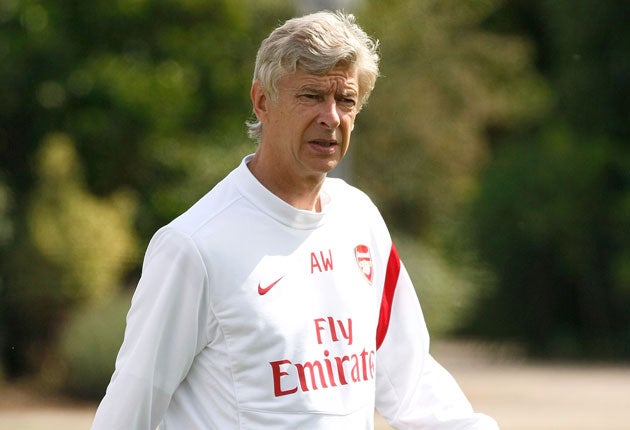Wenger's teams feel temporary – no wonder captain decided to go

The departure of Cesc Fabregas means the end of more than just a tiresome transfer story. For years he was not merely Arsenal's captain, talisman and best player, but their tactical keystone. The team was arranged around him, and moved at his behest. Few modern English clubs have had such an ideological bent as modern Arsenal, and never has a player so embodied a system.
But now he is gone. And Samir Nasri, who represented the same distinct Arsenal style, will likely follow him. Fabregas and Nasri so epitomise Arsène Wenger's plans, that their exit feels like the end of a chapter.
The narrative of post-Invincibles Arsenal is well known. After completing one of the most remarkable achievements in the history of English club football in 2004, Wenger won the FA Cup in 2005 but, coinciding with the 2006 move to the Emirates, adopted new policies.
With the stadium needing paying for, Wenger adopted a self-sustaining model of recruitment. Players were bought as boys and sold as men, generating the required money. Fabregas is the best example, but Gaël Clichy and Emmaneul Adebayor also turned a profit. This meant that Arsenal teams had a provisional feel. But it was Fabregas and Nasri, born seven weeks apart, who were meant to stay and be the two-chambered heart of the side.
The importance of the pair was even clearer when it came to the game itself. Possession football, as well as youth, was the post-Invincibles approach. Wenger abjured the athleticism of the 2003/04 team, valuing instead technique and patience.
For the last few seasons the side, playing a Barcelona-style 4-3-3, has been constructed around Fabregas. Fabregas's response to the responsibilities thrust upon him rarely failed to astonish. From the age of 18, he was Arsenal's chief creator. From his technical perfection, to his understanding of space, to his zealotry about how the game ought to be played. The sense he was always a Barcelona player in a red shirt was not entirely damaging.
It was no surprise the best recent moments of Arsenal bore his authorship. He set up Adebayor for the win at Old Trafford in 2006. He scored from distance at the San Siro as Milan were knocked out of Europe in 2008. At the Emirates last season he masterminded the defeats of Chelsea, in which he scored, and Barcelona, in which he released Nasri to set up Andrei Arshavin's goal.
For all those moments, though, there were never the trophies. In an interview with Don Balon in April, the Arsenal captain bemoaned his club's approach. "We haven't been successful since 2007, despite playing good football," he said. "That's when you realise that it doesn't work."
Ultimately, the team built around Fabregas and Nasri has not been good enough. The pair were meant to be the future of Arsenal but now they are the past. For them, Arsenal was, in Patrice Evra's memorable phrase, "a football training centre" – a phase in their development but only that.
Join our commenting forum
Join thought-provoking conversations, follow other Independent readers and see their replies
Comments